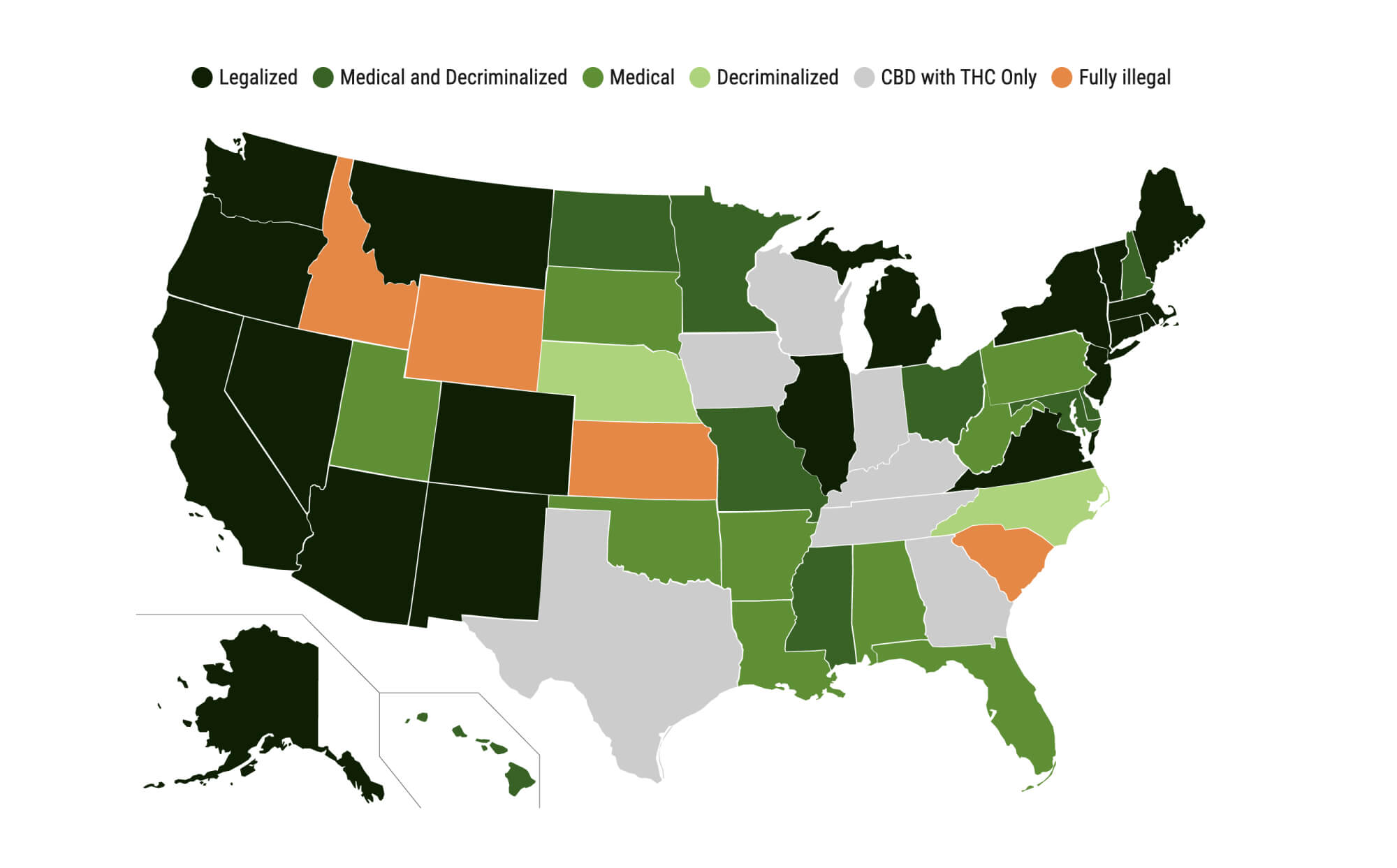Last Updated: November 2022
Cannabis News
The following information is provided from the disa.com website
Legal Standing United States
- State status reflects current laws at the time of update, not pending legislation or future dates upon which marijuana becomes available medicinally or recreationally. States with legislation that has passed but has a future enactment date will be marked with an asterisk *.
- CBD oil can be made with or without THC. This chart is specifically referring to CBD Oil with THC as an ingredient. CBD oil with THC is illegal in states marked as “Fully Illegal”.
- All “statuses” are subject to state limits. E.g., CBD Oil may only be legal to 0.5% THC or marijuana may only be legal to one ounce. Please consult state laws.
- **Effective July 1, 2022 in Minnesota, it will be legal to consume, manufacture, distribute, and sell edibles in packages containing up to 50 milligrams of any form of THC, so long as it’s derived from hemp.
Disclaimer
This information is provided for educational purposes only and not as legal advice or opinion. The reader retains full responsibility for the use of the information contained herein.
Employers or employees seeking a determination of legal rights should seek the counsel of an attorney or designated official of the applicable regulating agency.

Staggering Statistics
In 2019, the ASPCApro reported that their call center received a substantial increase in calls about cannabis ingestion by animals. The ASPCC reported a 765% increase over the same timeframe last year.
Cannabis News
In a Science Daily article dated April 20, 2022, a study was shared, showing that cannabis poisoning cases have increased significantly in North America since Canada’s 2019 legalization.
Richard Quansah Amissah of the Ontario Veterinary College at the University of Guelph in Ontario, Canada and his colleagues submitted these findings in the open-access journal PLOS ONE on April 20, 2022.
In short, their 2021 survey data came from 251 veterinarians based in both Canada and the U.S. The survey questions covered cannabis poisoning cases encountered between January 2021 and April 2021.

40% of Vets Reported an Increase in Cannabis Poisoning
Cannabis legalization in North America has coincided with an increase in reports of cannabis-induced toxicosis in pets, but the magnitude of this problem, as well as outcomes of these incidents remain unknown.
Richard Quansah Amissah and his colleagues added “This is an important topic to study in the light of recent legalization of cannabis in Canada and across multiple states. In order to understand the mechanisms underlying cannabis-induced toxicosis in pets, and to develop treatments for it, we need to first understand what it looks like; this is what we had hoped to accomplish with this survey and believe that these findings will help us get a better handle on this under-studied topic.
Richard Quansah Amissah, Nadine A. Vogt, Chuyun Chen, Karolina Urban, Jibran Khokhar. Prevalence and characteristics of cannabis-induced toxicoses in pets: Results from a survey of veterinarians in North America. PLOS ONE, 2022; 17 (4): e0261909 DOI: 1371/journal.pone.0261909
Cite: PLOS. “Cannabis poisoning cases in pets have increased significantly, study finds: Vets describe increased cases in North America since Canada’s 2018 legalization; reveal poisoning outcomes.” ScienceDaily. ScienceDaily, 20 April 2022.
Cannabis Edibles
Cannabis edibles were found to be the most frequent cause of poisoning, mainly with dogs. However, cannabis poisoning was also seen in this study in cats, iguanas, ferrets, horses, and cockatoos.
Symptoms observed and reported included “urinary incontinence, disorientation, and abnormally slow heart rate.”

